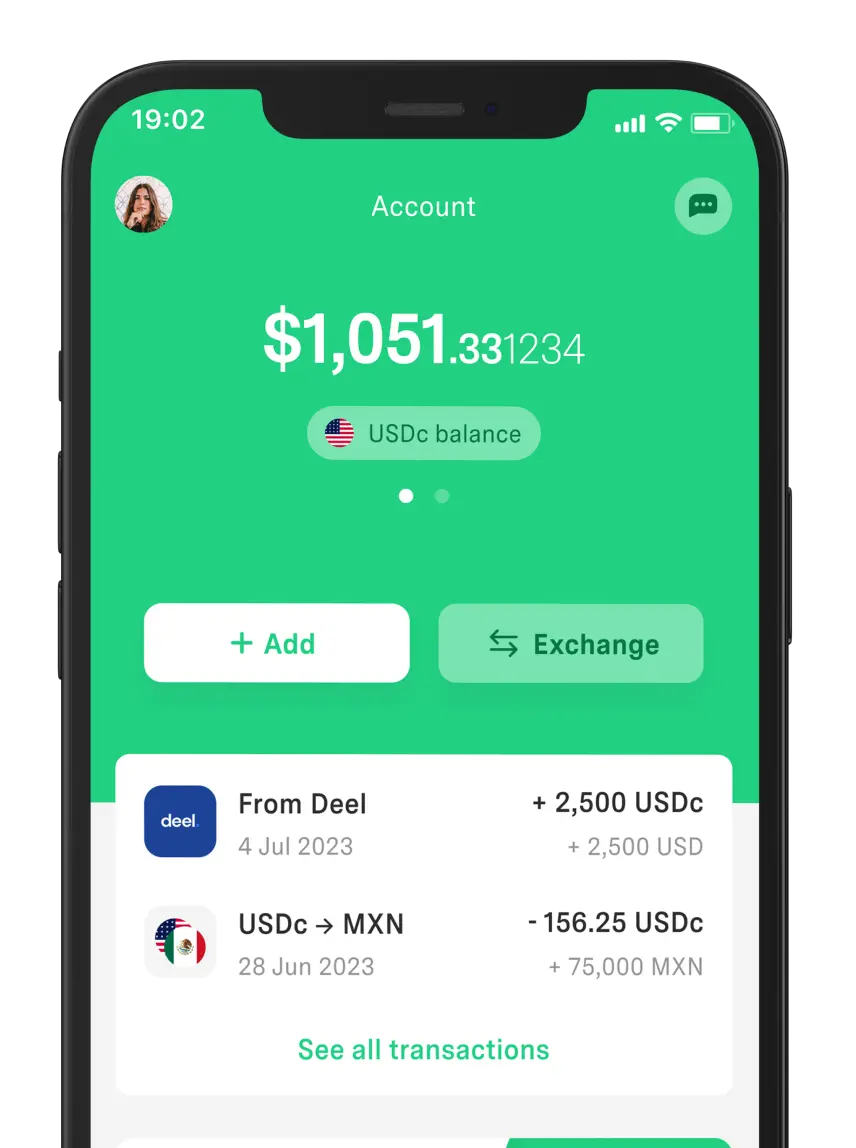 Freelancer tips
Freelancer tips Digital identity: What it is, characteristics, and practical examples
Digital identity can affect trust and reputation, both personally and professionally. Discover what it is and what to do to protect it.



A differentiation strategy is the way a company stands out from the competition with something others don’t offer. In a market full of options that look increasingly similar, it’s key to staying relevant.
However, differentiation depends on the value provided by freelancers, entrepreneurs, SMEs, or digital brands. Of course, it also depends on the service they offer and the experience they create in order to build a lasting advantage.
Do you have a business?
Understanding what a differentiation strategy is and how to apply it is the first step to standing out in a market where many promise the same thing. And in this post, we’ll walk you through everything you need to know.
It’s an approach that aims for a product or service to be perceived as unique compared to the competition because of its value. The goal is clear: to create a sustainable competitive advantage that resonates with customers and makes them choose the brand again and again.
That differentiation can show up in different ways. It might be through the product, the service, the brand, or even the entire experience built around them…
A company, freelancer or entrepreneur can stand out from the competition by applying different types of approaches. Each one focuses on a key aspect, depending on the kind of value the business wants to highlight.
These are the main ones:
Product differentiation. Focuses on offering unique features, higher-quality materials, or a design that makes the customer perceive the product as superior.
Service differentiation. The company stands out by providing personalized attention, fast response times, or strong after-sales support, which builds trust and loyalty.
Brand differentiation. Built from values, purpose, and consistent communication that convey identity and emotional connection.
Experience differentiation. Aims to captivate the customer through sensations, comfort, atmosphere, or an integrated experience that reinforces perceived value.
Innovation differentiation. Focuses on introducing new ideas, technologies, or business models that make it easier for the customer to use or perceive the product/service.
The following table summarizes each type:
Type of differentiation | What it focuses on |
By product | Quality, design, or technological innovation. |
By service | Personalized attention and efficient support. |
By brand | Values, purpose, and consistency in communication. |
By experience | Feelings, emotional relationship, perceived value. |
By innovation | Creativity, disruption, or new ways of using it. |
An effective differentiation strategy requires method, analysis, and consistency. It’s not just about being different, but about creating an identity that makes the brand unmistakable.
The key steps to building a sustainable competitive advantage are:
Analyze the market and your competitors.
Identify unique attributes of your product or service.
Communicate your value proposition consistently.
Keep quality at the center.
Measure results and adjust your strategy.
Evaluate what your competitors offer, how they communicate it, what they promise, and especially what they’re not covering
Use strategic models like Porter’s Five Forces to pinpoint which factors are shaping your industry.
This analysis will help you find market gaps.
This could be something:
Tangible, meaning features, quality, delivery times.
Intangible, such as guidance, closeness, support, or ease of use.
The idea is to answer honestly: What can your customer find here that they can’t get in the same way somewhere else?
Also, your business differentiation should be reflected in decisions around the 4Ps of marketing (product, price, place, and promotion).
Differentiation only works if it shows up on your website, social media, emails, offers, and in the way you talk to your customers.
A clear narrative strengthens brand identity and builds trust.
There’s no point promising warmth and closeness and then having cold, slow support. Perception of quality directly affects brand positioning and customer loyalty.
So use quality indicators to ensure your promise is fulfilled in every interaction.
A good differentiation strategy is never “finished.” You need to measure results and adjust to improve. That’s why you should always:
Listen to your customers.
Review your metrics.
Adapt your actions as the market changes.
That’s where the advantage becomes sustainable.
Lean on tools like Google Workspace to keep communication fluid between teams, share ideas, and coordinate actions.
Internal collaboration boosts external consistency, which strengthens your differentiation strategy.
The world’s most successful brands have built a strong identity and a hard-to-copy value proposition. Often because they don’t compete only on price, but on how they deliver value and connect with their customers.
Real differentiation strategy examples:
Apple’s competitive advantage is based on a differentiation strategy that combines factors such as:
Constant innovation.
Minimalist design.
High-quality products.
This is how it manages to sustain a premium brand positioning in the market.
Tesla’s strategy stands out for its early commitment to electric vehicles, with long range and over-the-air software updates—as well as a strong emphasis on energy innovation.
Tesla doesn’t just sell electric cars; it sells a vision of the future based on sustainable technology.
Just like Tesla, Starbucks goes beyond selling coffee: it offers a place where people feel like part of a community. This includes the atmosphere, service, and order personalization.
This approach, known as the “third place”, is part of its differentiated marketing strategy to maintain its competitive edge and build customer loyalty.
DolarApp differentiates itself by offering a simple app to operate with digital dollars or euros without bureaucratic processes.
The app stands out for its intuitive experience, transparency in rates, and the trust it builds among users.
Beyond standing out from the competition, implementing a solid differentiation strategy brings the following benefits:
Increases customer loyalty. When a brand offers something others can’t easily replicate, customers develop a deeper, longer-lasting connection.
Allows you to set more competitive or premium prices. A differentiated product doesn’t just compete on price; it can be positioned in higher ranges without hurting demand.
Strengthens the brand and trust. Keeping consistency between what you say and what you deliver translates over time into a strong reputation.
Improves perceived added value. A clear, differentiated proposition raises the perceived value of the product/service. This allows the company to justify its prices and maintain a sustainable competitive advantage.
Drives innovation and continuous improvement. Brands are always looking for ways to be different, which keeps them creative and open to change. At the same time, it encourages new ideas and more efficient processes.
However, it also requires moments of deep work, especially if you’re looking for better long-term results. Because it’s in those focused work spaces where the ideas that truly transform a business tend to appear.
In a crowded environment full of options, the brands that stand out are the most authentic. And many businesses, freelancers, and entrepreneurs understand this perfectly.
A differentiation strategy doesn’t mean competing on price, but on value—and it’s not built overnight. In fact, it requires observing the market, recognizing what makes the business unique, conveying it consistently, and constantly evaluating its impact.
More than a one-off exercise, it’s an ongoing process. Once you understand its essence and project it clearly, you’ll build a brand with purpose and a competitive advantage that will last over time—and, of course, you’ll win customers.
At DolarApp, we differentiate ourselves from other financial apps through our simple, transparent, and reliable technology. We give you the ability to send or receive USDc/EURc and offer a fair exchange rate to buy or sell foreign currency.
It’s a strategy that aims to make a product or service stand out through unique attributes or added value. The goal is to build a competitive advantage that generates customer preference and loyalty.
The most common are by product, service, brand, experience, and innovation. Each focuses on a different aspect of the business to create a perception of superior value compared to the competition.
Companies like Apple, Dyson, and Samsung differentiate through design and innovation, while Tesla, NIO, and Rivian stand out in sustainable technology. DolarApp, Airbnb, and Netflix also shine thanks to their simplicity, transparency, and digital innovation.
Effective differentiation is built with authenticity, consistency, and an experience that delivers real value to the customer. To achieve this, it’s essential to analyze the market, identify unique traits, communicate them consistently, and measure results.
Sources:

Los países tienen fronteras. Tus finanzas, ya no.
 Freelancer tips
Freelancer tips Digital identity can affect trust and reputation, both personally and professionally. Discover what it is and what to do to protect it.

 Freelancer tips
Freelancer tips Understanding consumer needs is vital in any business to deliver value. Discover how they’re classified and what to do to identify them.

 Freelancer tips
Freelancer tips A focus group provides valuable information for making better decisions before launching a product on the market. Find out what it is and when to use it.


